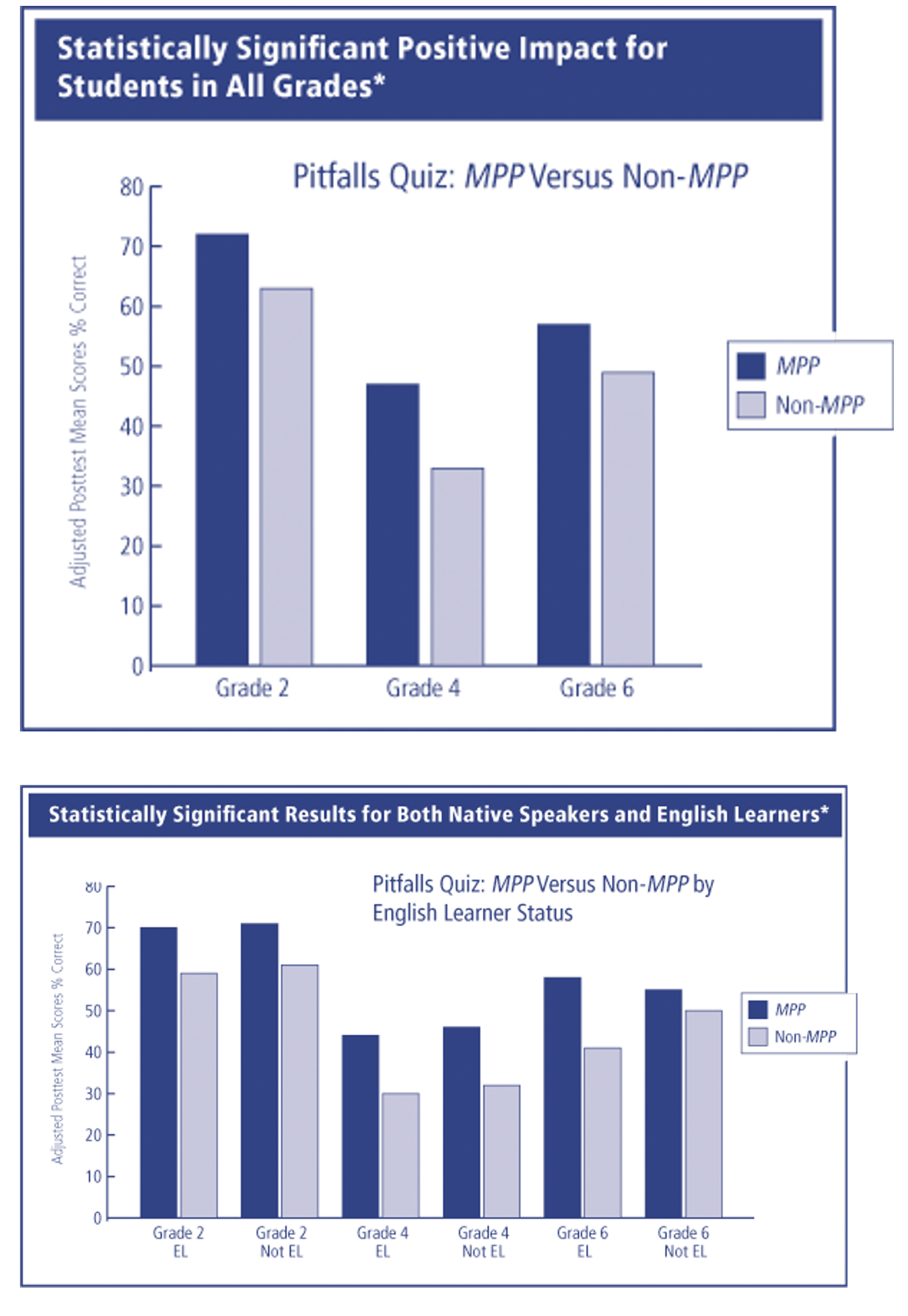Math Pathways & Pitfalls® tasks mediate learning in multiple ways, using oral, print, and other visual modes of communication. For example, mathematical concepts in Math Pathways & Pitfalls lessons are initially developed by discussing the thinking of two fictional students. Their thinking, presented in print and supported by labeled drawings, purposefully embeds important conceptual ideas to prime the discussion. Having both text and drawings to refer to allows students to examine—and reexamine—the mathematical ideas.
The Math Pathways & Pitfalls lesson lays a conceptual foundation and then allows students’ own solutions to serve as the basis for discussion and learning. The lesson encourages students to explain their solutions and their thinking orally, supporting their reasoning with drawings and symbols. Learning mediated through multiple modalities is particularly important in providing access for strong visual learners and multilingual learners (Echevarria, Vogt, & Short, 2004).
Findings From Studies
The Impact of Math Pathways and Pitfalls on Students’ Mathematics Achievement, 2000–2005
National Science Foundation Experimental Study (ESI-9911374)
WestEd researchers implemented a cluster-randomized experimental design in five school districts across the nation over a 2-year period. In the first year of the study, grades 2, 4, and 6 teachers were randomly assigned within their school districts in roughly equal numbers to either an experimental group or a control group. The experimental-group teachers were taught how to implement Math Pathways & Pitfalls during a 6-hour professional development (PD) session in the summer. Project consultants, trained by project staff, conducted the PD. In the first year of the study, experimental-group teachers substituted Math Pathways & Pitfalls for a portion of their regular mathematics curriculum. The control-group teachers used their regular mathematics curriculum and received whatever professional development they normally were provided during that year. A total of 99 teachers and 1,971 students participated in the first year of the study.
In the second year of the study, control-group teachers received 4 days of professional development and then substituted Math Pathways & Pitfalls for a portion of their regular mathematics curriculum. The experimental-group teachers from the first year of the study had the option of teaching Math Pathways & Pitfalls again in the second year. These teachers were not obligated to participate in the second year of the study, so many elected not to participate; as a result, results from the first year only are presented in this report.
Key Findings: This cluster-randomized experimental study found significant positive effects (ESS = 0.43 to 0.66) for Math Pathways & Pitfalls students as measured by a project-designed mathematics achievement test. Study participants included geographically, linguistically, and ethnically diverse students in grades 2, 4, and 6.
Findings from this large-scale experimental study, conducted in 2000–2005, demonstrated that teaching using only 15 hours of Math Pathways & Pitfalls lessons in place of regular mathematics lessons boosted student achievement during the course of one school year.
